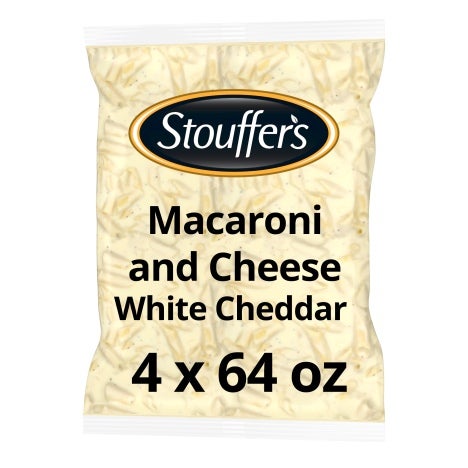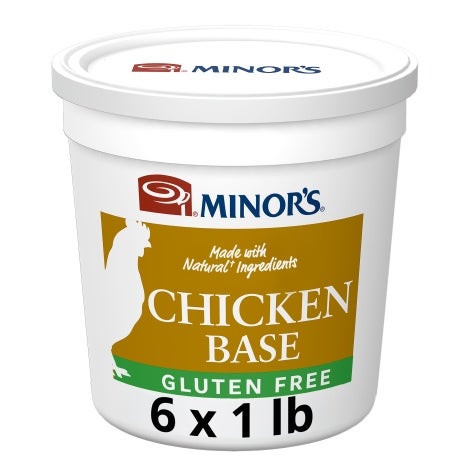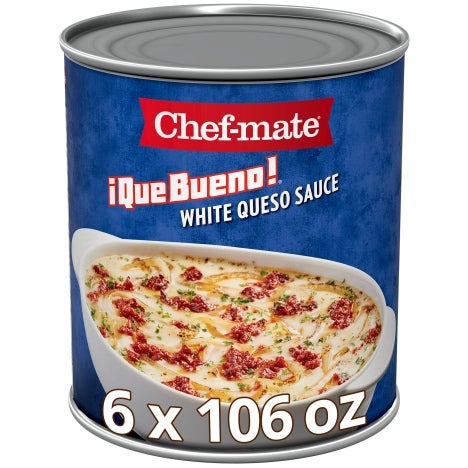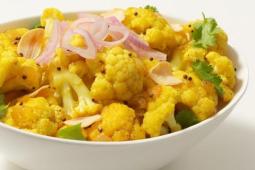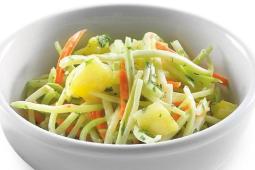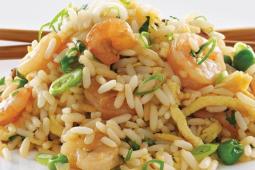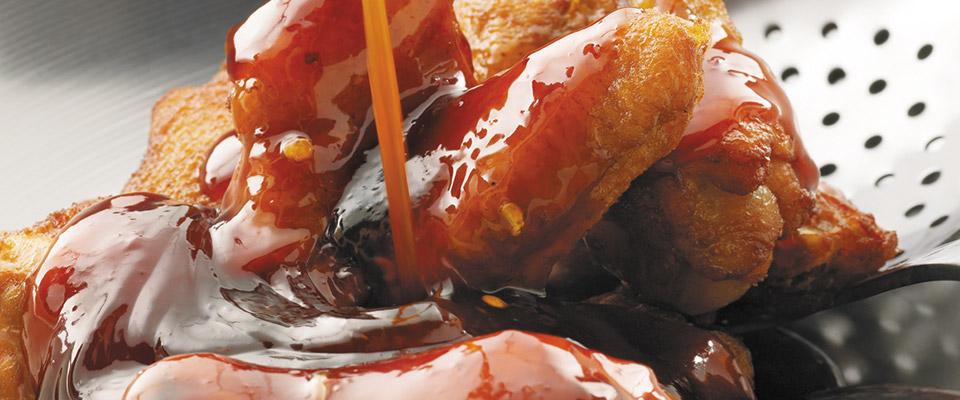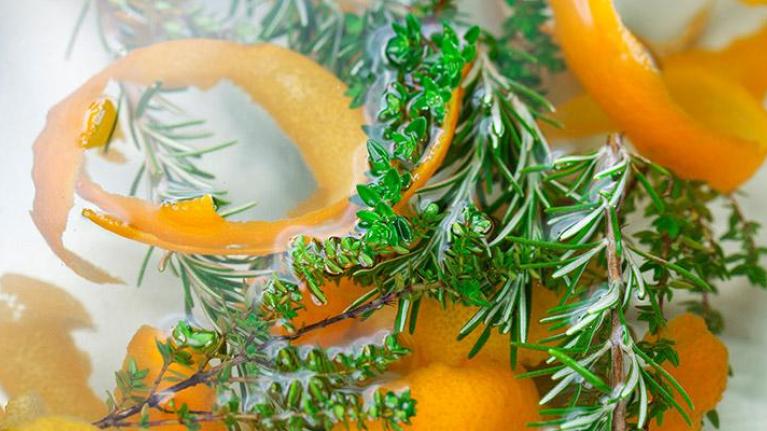
- Trends & Insights
- Sustainability
30 Ideas for Cutting Food Waste
Reducing food waste might be the very best way to reduce cost and increase sustainability. Discover how to use food scraps to make soups, sauces, and other flavorful dishes.
Technomic calls it the Zero Waste Kitchen, proclaiming food waste reduction as the most important sustainability goal of 2017.
Americans throw away billions of pounds of food each year, worth billions of dollars and enough to feed millions of people. According to the Environmental Protection Agency, food constitutes about 21% of the total waste stream—more than any other single material entering the nation’s landfills and incinerators. Unfortunately, restaurants are a big part of the problem. U.S. Department of Agriculture data reveals that diners leave an average of about 17% of meals uneaten, and 55% of potential leftovers are not taken home. A single restaurant can produce about 25,000 to 75,000 pounds of food waste a year, according to USDA, and food waste comprises about half of a restaurant’s waste stream.
Food service operators and consumers alike increasingly are sharing the concern, and are developing some innovative ways of addressing the problem, as tracked by both Technomic and Datassential:
- California State University’s mobile app notifies students when leftover meals are available from catered campus events
- WasTED, a New York pop-up specializing in food made from scraps, has served such items as kale rib stew, burger patties incorporating vegetable pulp left over from juicing, and a Dumpster Dive Salad (with “damaged apples and whipped chickpea”)
- The Old Goat, in Grand Rapids, MI, proudly serves pickled vegetable scraps with its smoked and grilled chicken wings menu item
- Santa Barbara (CA) City College has developed recipes for zero waste Gumbo and Split Pea soups, which utilize stocks made from the irregular pieces, scraps, and stems of vegetables, as well as leftover deli meats—especially smoked ham and turkey—from the sandwich line
Although many of these initiatives are designed to raise consumer awareness of the issues, food waste reduction strategies can also be effective when used behind the scenes. Here are some ideas for “upcycling” food, provided by Minor’s® chef Christopher Britton and other members of the Nestlé Professional team:
- Utilize carrot tops, imperfect spinach or arugula leaves, parsley and basil stems, and more in pesto variations.
- Make a delicious broccoli soup with stems, leaves, and other trim: Cook and purée with cream and stock. Save some of the nice florets for garnish.
- Overripe and bruised or imperfect fruit can be juiced, or turned into sauces, jams, chutney, ice cream/sorbets, and more.
- After trimming the kernels off the corn cobs, slide a knife up and down the cob to release the white corn milk, which can be sweetened and used for panna cotta, puddings, or milkshakes.
- Oven-dry herbs such as basil, lavender, mint, or even celery leaves—or a blend thereof—and combine with salt to create a housemade finishing salt.
- Roast shrimp shells and steep with clarified butter and paprika, then chill to create a flavorful shrimp butter—a great finish for seafood bisque or grilled seafood.
- Blacken scallion or leek tops in the oven, pulverize into a powder, and sprinkle on anything that could use some smoky flavor.
- Save the aquafaba (bean water) from canned beans and use it as an egg replacement in vegan recipes, such as meringue or mayonnaise. Garbanzo brine, in particular, is a great source of plant-based protein that is not only fat-free and dairy-free but also gluten free.
- Donate unused food—prepared and unprepared—to food banks. Many communities are developing programs that provide pickup of unwanted food.
- Sear off or fry chicken or fish skin to create a crispy element for a salad or other menu item.
- Soup—especially a soup du jour—is the perfect repository for unused food and scraps (trim, off-sized bits, overproduction, etc).
- Cook fish racks, heads and fins, and pick off the meat for fish cakes, pasta and dumpling fillings, or croquettes.
- Use leftover bread for breadcrumbs to add texture to pasta and vegetable dishes, or to top off a gratin.
- Breadcrumbs can also be used to thicken sauces, and to extend meat mixtures.
- Use the large outer leaves of lettuce and cabbage as a wrapper for flavorful fillings.
- Broccoli and cauliflower stems can be turned into slaw or riced as a side dish.
- Simmer herb stems and tomato or vegetable peels in stock to boost its flavor before making a soup or sauce.
- Wrinkled or imperfect berries are great for making salsa.
- Turn the peels from citrus fruits into a cocktail garnish, or candy and use in desserts.
- Use extra carrots, cucumbers, celery, scallions, and other workhorse vegetables for quick pickles; other pickle possibilities include cauliflower and cabbage cores.
- Toss Parmesan and other hard-cheese rinds into the soup pot to add depth, body, and flavor.
- Use mushroom stems and trimmings in meat patties, meatballs, and meatloaf mixtures.
- Menu a bread salad utilizing day-old peasant bread, pita, or other breadstuff.
- Use juicer pulp in muffins and other baked goods.
- Look into local farms or urban gardens that can use food scraps for compost.
- Have servers automatically offer to pack up unfinished food for guests.
- Offer half portions as an option for customers with lighter appetites, or who may not want or be able to take home the extras.
- Infuse gin or vodka with vegetable and fruit peels and trimmings—even tomato vines and stone-fruit pits—for a signature cocktail.
- Use scrubbed potato peels to make chips, or bake into a Spanish-style egg tortilla.
- Oven-roast and season squash seeds for a bar snack.
- Use broken nuts to crust fish and chicken portions.
Sources: Technomic Menu Directions, “15 Trends in 15 Minutes” (2017); Datassential, On the Menu (January 2016), “Food Made from Scraps”
The information provided is based on a general industry overview, and is not specific to your business operation. Each business is unique and decisions related to your business should be made after consultation with appropriate experts.
- Soup represents an excellent utilization for food that would otherwise be wasted, from Swiss chard stems to meat trim. Bases from Minor’s® and Maggi® are the starting point for flavor
- Gravies, cheese sauces, and white sauce from the Nestlé Professional family of brands are the tie that binds in fillings, gratins, croquettes, and other upcycled foods
- Prepared foods from Stouffer’s®—including items like Alfredo Sauce and Penne Pasta, Traditional Macaroni and Cheese, and Ready-to-Eat Smoky Black Beans—lend themselves to the addition of all sorts of “extras,” from unused sandwich meats to puréed broccoli from overproduction
- Aquafaba “Mayonnaise” with Roasted Garlic is a flavorful utilization for the liquid (aquafaba) drained off canned beans
- Flavored butters represent an excellent repository for trim, overproduction, and left-behind bits and pieces of all kinds of flavor-boosting ingredients. Take a look at this Seasoning Butter recipe as a starting point in the creative process
- For more saucy ideas, read this article on Multitasking Ingredients
